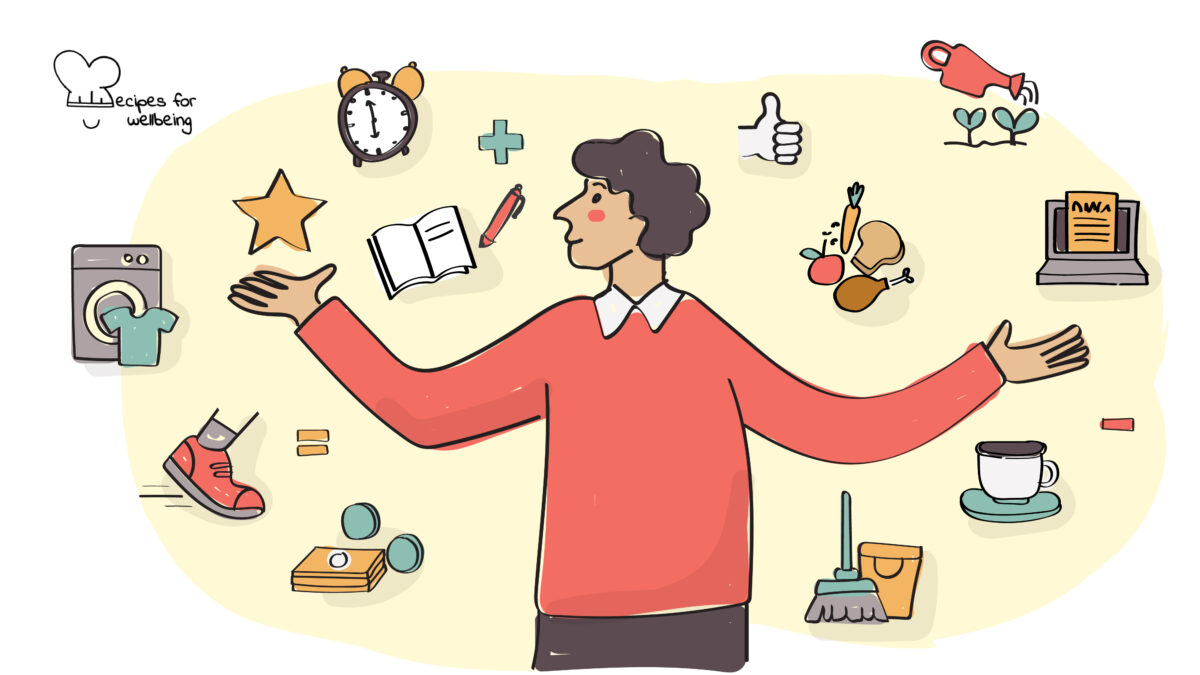
The habits scorecard
Until you make the unconscious conscious, it will direct your life and you will call it fate. ―Carl G. Jung
👥 Serves: 1 person
🎚 Difficulty: Easy
⏳ Total time: 11-30 minutes
🥣 Ingredients: A sheet of paper and a pen, book “Atomic Habits: An easy and proven way to build good habits and break bad ones” by James Clear (if you’re curious to find out more about it!)
🤓 Wholebeing Domains: Accomplishments, Awareness, Discomfortability
💪 Wholebeing Skills: Accountability, Adaptability, Agency, Agility, Determination, Focus, Goal-setting, Perseverance

The habits scorecard
📝 Description
Making unconscious habits conscious.
You might have heard the saying “We are creatures of habit”. Why is that? Because there is comfort in habits. What are habits? Habits are structures you have developed over time (by repeating certain behaviours time and time again until they become automatic) that get through your day. Habits are rather helpful because they reduce the cognitive load and free up mental capacity so you can attend to other things. By relying on previous experiences, your brain skips the mental process and makes a quicker decision. James Clear, author of Atomic Habits, defines habits as “mental shortcuts learned from experience”.
However, habits are a double-edged sword. Good habits can build you up, but bad habits can cut you down. James Clear explains that understanding the details is crucial because your “outcomes are a lagging measure of your habits”. The following activity invites you to create a habit scorecard to differentiate between “good”, “neutral”, and “bad” habits so you can move from unconsciousness to consciousness. It has been adapted from Clear’s book. After completing this recipe, we also suggest checking out another recipe: “Habit tracker” which provides a simple structure to then track your habits (whether you want to build new habits or break bad habits).
👣 Steps
Step 1 – List your daily habits (10’)
Take pen and paper and start making a list of your daily habits. Try to be as specific and inclusive as possible, e.g.
- Wake up
- Turn off alarm
- Check my phone
- Go to the bathroom
- Make a cup of coffee
- Eat my breakfast
- Take a shower
- Brush my teeth
- Floss my teeth
- Put on body lotion
- Put on deodorant
- Get dressed
- …
Step 2 – Assess your habits (10’)
Now look at each behaviour and ask yourself: “Is this a good habit, a bad habit, or a neutral habit?”
- If it’s a good habit, write “+” next to it.
- If it’s a bad habit, write “–” next to it.
- If it’s a neutral habit, write “=” next to it.
Of course, the marks you give to a particular habit are contextual and they depend on your goals, e.g. the same habit might be positive for someone and negative for someone else. In fact, the labels “good” and “bad” are a bit misleading as there are no such things as “good” or “bad” habits but only “effective” or “ineffective” habits to solve your problems.
So, if you struggle to categorise them, James Clear suggests to ask yourself: “Does this behaviour help me become the type of person I wish to be? Does this habit cast a vote for or against my desired identity?”
Step 3 – Observations (10’)
Once you finish your ranking, take a moment to notice what is emerging. Observe your thoughts and actions without judgement or internal criticism. The purpose of this activity is to raise your level of awareness and make your unconscious habits conscious. If you’re ready to take this a step further, check out our recipe “Habit tracker”.

